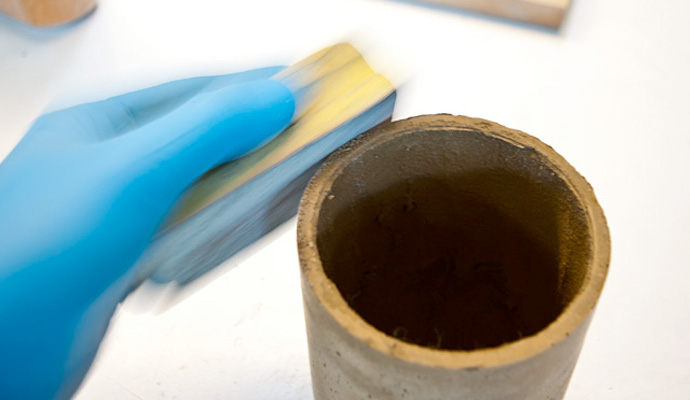Hand Sanding with Diamond Pads
Diamond hand sanding pads are a worthwhile investment for anyone who works with concrete, stone, ceramics, or glass on a regular basis. Sandpaper and files can be used to clean up jagged edges, but the big advantage of diamond hand pads is that they cut quicker and last longer than anything else. They come in a range of grits, from very coarse to very fine, and they can be used wet or dry.
A lot of companies make diamond hand pads, but be careful buying cheap pads. They're often cheap because the cutting surface contains fewer diamonds, which brings the cost down, but it also means they don't last as long and you'll just have to replace them sooner.
We've been using Alpha® Tools diamond pads in the shop with good results. Our go-to pads are 60, 150, 300, and 500. The finer grits (1000, 2000, 3000) are nice to have but don't see as much use. The real workhorse is the blue 60-grit pad. The longer you let your project cure, the harder it gets, but the 60-grit always gets the job done (and wears out the quickest!)
For polishing large areas we recommend using a variable speed concrete polisher and polishing pads because hand sanding will be very time consuming.
Watch the video below for a quick overview of Hand Sanding:
Polishing by hand is possible on small areas. The image on the left shows the piece as it came out of the mold. The center image shows the polishing pad in use, and the image on the right shows the surface after the sand aggregate has been exposed by polishing. At this point you would progress up through the grits until you've achieved the desired finish.
Electroplated pads on the left vs. Resin bond pads on the right. The electroplated pads use nickel plating technology to hold each individual diamond in place, while the higher grit pads use fine diamond powder embedded in a resin substrate.







